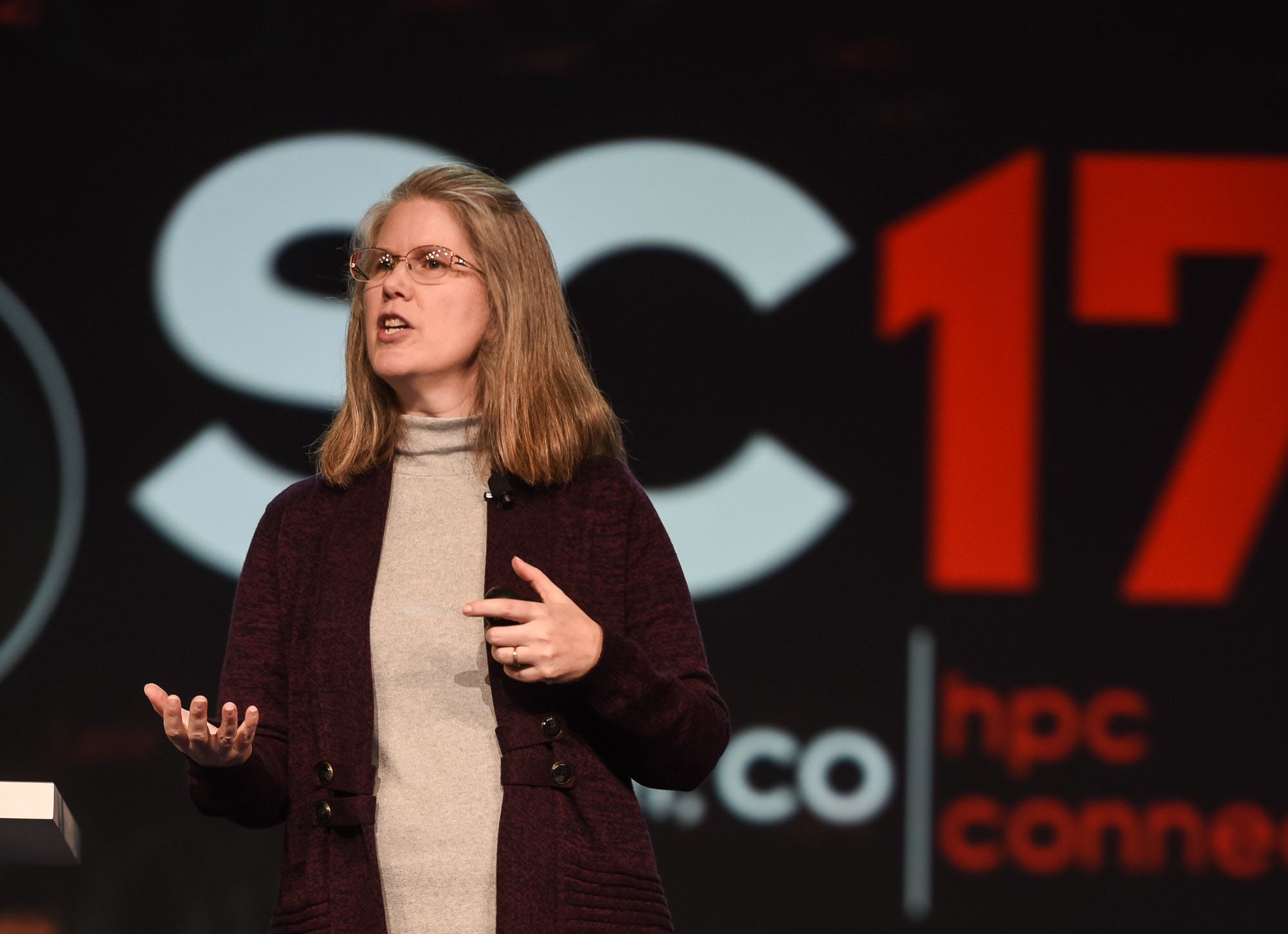
A bigger, faster computer is coming. But will researchers be able to make use of it?
Exascale computers are predicted to be here sometime in the 2020s. These computers will be at least 50 times faster than the most powerful computers of today, greatly enhancing the computing power available — if the software can keep up. Theresa Windus, a professor of chemistry, paves the way in preparing computational chemistry software for exascale speeds.
Windus was one of twelve invited speakers at The International Conference for High Performance Computing, Networking, Storage and Analysis this past November (also known as Supercomputing ’17 or SC ’17) in Denver, Colorado. The conference is the largest supercomputing meeting in the world, bringing together 11,000 scientists both nationally and internationally who are either involved in computer science or have an interest in how high-performance computing can be used for their particular scientific field.
“It was a great privilege,” Windus said.
She talked at the meeting on the challenges of preparing for exascale computing and the possible solutions her teams have come up with.
She works on two projects preparing for exascale computing: GAMESS, led by Mark Gordon at Iowa State, and NWChemEx, led by Thomas Dunning Jr. at Pacific Northwest National Laboratory. Both projects are software platforms for modeling chemistry and both will need updating to run on the new, faster exascale computer systems.
“The kind of science that this can really enable is huge,” Windus said. “We could model a much more realistic system.”
Because of the scale of what can be done with an exascale computer, more of the surrounding environment, which often affects the chemistry, can be taken into account in the simulations. In addition, simulations can be run allowing for the many different ways and configurations in which a reaction might happen, better predicting if a reaction will happen, how quickly it would happen and what the end products of the reaction would be.
Three focus areas for the new software, Windus said, are performance, portability and productivity. The software algorithms need to be able to perform across the entire exascale machine. It also has to be portable across different exascale machines, which will likely have different architectures from each other. It also needs to be productive for any researcher to use, even graduate students who may have only a basic understanding of coding technique.
It’s a tall order with a moving target. What exascale will look like is only anticipated and not yet known. But Windus brings expertise in high performance computing research, an area she has worked on since her graduate work at Iowa State in 1993. She was also a team lead from 2001-2006 for the NWChem project, now twenty years old and undergoing a complete rehaul in preparation for exascale.
“I like the challenge of trying to figure out how to make all these different pieces work together and hopefully come up with a beautiful, creative, performing product in the end,” Windus said.